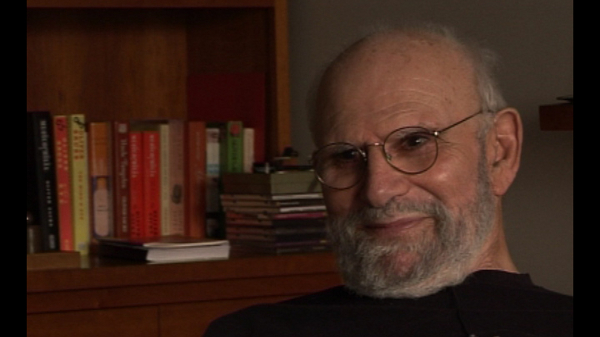NEXT STORY

The publishing of Migraine
RELATED STORIES

NEXT STORY

The publishing of Migraine
RELATED STORIES


|
Views | Duration | |
|---|---|---|---|
| 121. The blissful feeling having written Migraine | 308 | 01:11 | |
| 122. Wanting to publish addendums to Migraine | 276 | 02:11 | |
| 123. The publishing of Migraine | 283 | 02:20 | |
| 124. Starting to see the Awakenings patients | 331 | 00:46 | |
| 125. The use of L-DOPA in the Awakenings patients | 483 | 01:46 | |
| 126. Positive reviews for Migraine | 271 | 01:26 | |
| 127. Drafting books on 'tics', sub-cortical functions and... | 1 | 259 | 01:28 |
| 128. Responding to Luria's work on higher cortical functions | 278 | 01:03 | |
| 129. Letters to the editors of 'The Lancet' and 'JAMA' | 257 | 04:07 | |
| 130. Encouragement from James Purdon Martin | 328 | 00:56 |


During those excited, exalted six weeks or so in the fall of '68 I... I didn’t stop writing, but I thought I might add to the Migraine book all sorts of details as to what might be seen in the visual aura and what might be going on in the brain. I sent these excited addenda to a neurologist in England, a very good one called William Goody, who had written a lovely foreword to the book. And Goody said, ‘No’. He said, ‘The book is fine as it is’, he said, ‘But I think in what you’ve been sending me, there are thoughts which you will return to again and again in the coming years’. And I think he was exactly right there, I'm glad that he protected the book against my too-muchness and my exuberance, which I think had become rather pathological by that point.
In fact, 25 years later, when I met my, alas recently-deceased friend, Ralph Siegel who was a very good mathematician and a computer simulator of nervous activity, meeting him on the one hand and seeing an exhibit of migraine art on the other hand, reactivated these thoughts of 25 years earlier. And I then did write the Part Five which... which was fairly coherent, whereas it would have been impossible. It’s interesting that one can have thoughts which are... which are premature, and how sensitively Goody perceived this.
Oliver Sacks (1933-2015) was born in England. Having obtained his medical degree at Oxford University, he moved to the USA. There he worked as a consultant neurologist at Beth Abraham Hospital where in 1966, he encountered a group of survivors of the global sleepy sickness of 1916-1927. Sacks treated these patients with the then-experimental drug L-Dopa producing astounding results which he described in his book Awakenings. Further cases of neurological disorders were described by Sacks with exceptional sympathy in another major book entitled The Man Who Mistook His Wife For A Hat which became an instant best seller on its publication in 1985. His other books drew on his rich experiences as a neurologist gleaned over almost five decades of professional practice. Sacks's work was recognized by prestigious institutions which awarded him numerous honours and prizes. These included the Lewis Thomas Prize given by Rockefeller University, which recognizes the scientist as poet. He was an honorary fellow of both the American Academy of Arts and Letters and the American Academy of Arts and Sciences, and held honorary degrees from many universities, including Oxford, the Karolinska Institute, Georgetown, Bard, Gallaudet, Tufts, and the Catholic University of Peru.
Title: Wanting to publish addendums to "Migraine"
Listeners: Kate Edgar
Kate Edgar, previously Managing Editor at the Summit Books division of Simon and Schuster, began working with Oliver Sacks in 1983. She has served as editor and researcher on all of his books, and has been closely involved with various films and adaptations based on his work. As friend, assistant, and collaborator, she has accompanied Dr Sacks on many adventures around the world, clinical and otherwise.
Tags: Migraine, William Goody, Ralph Siegel
Duration: 2 minutes, 11 seconds
Date story recorded: September 2011
Date story went live: 02 October 2012